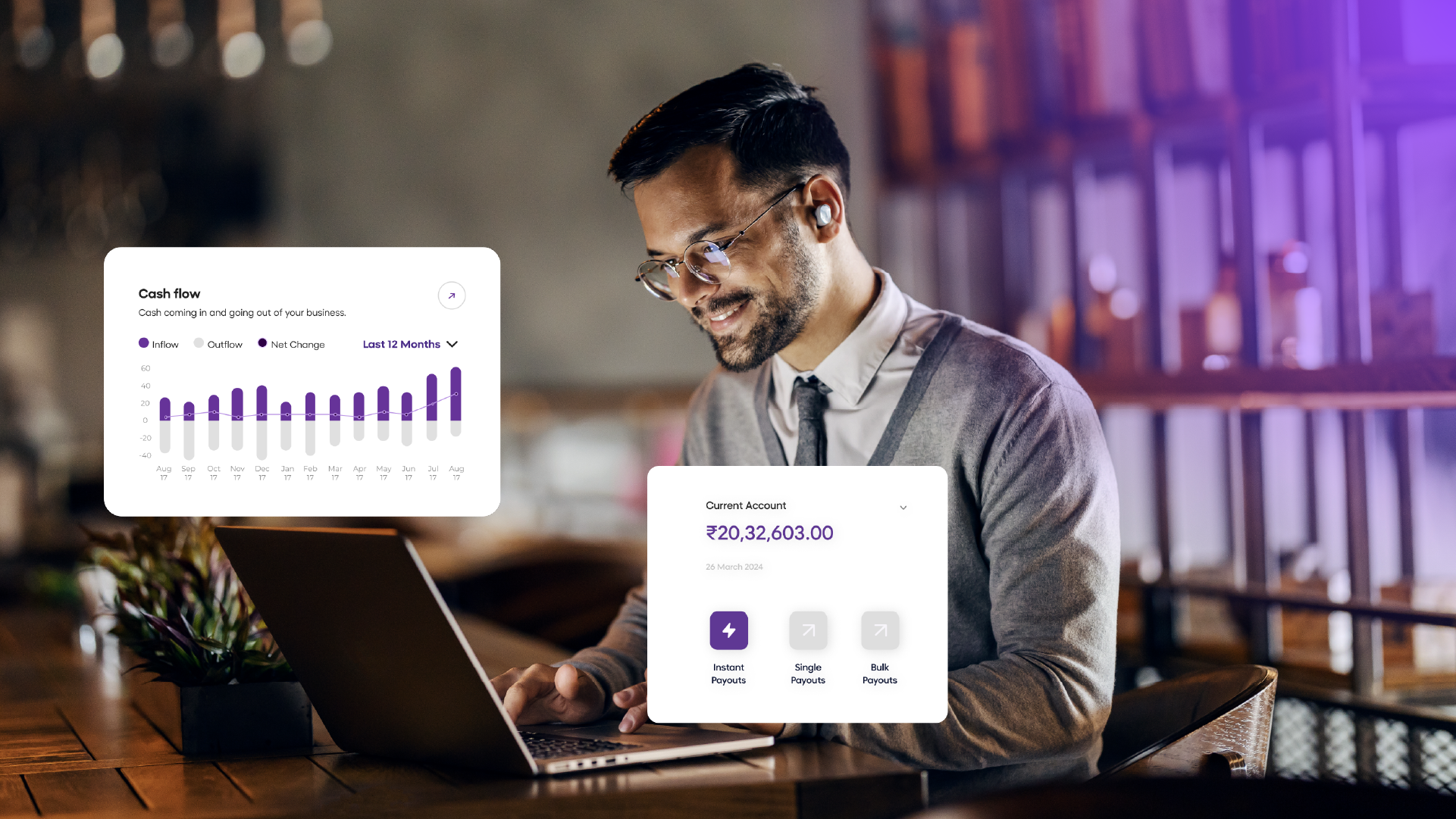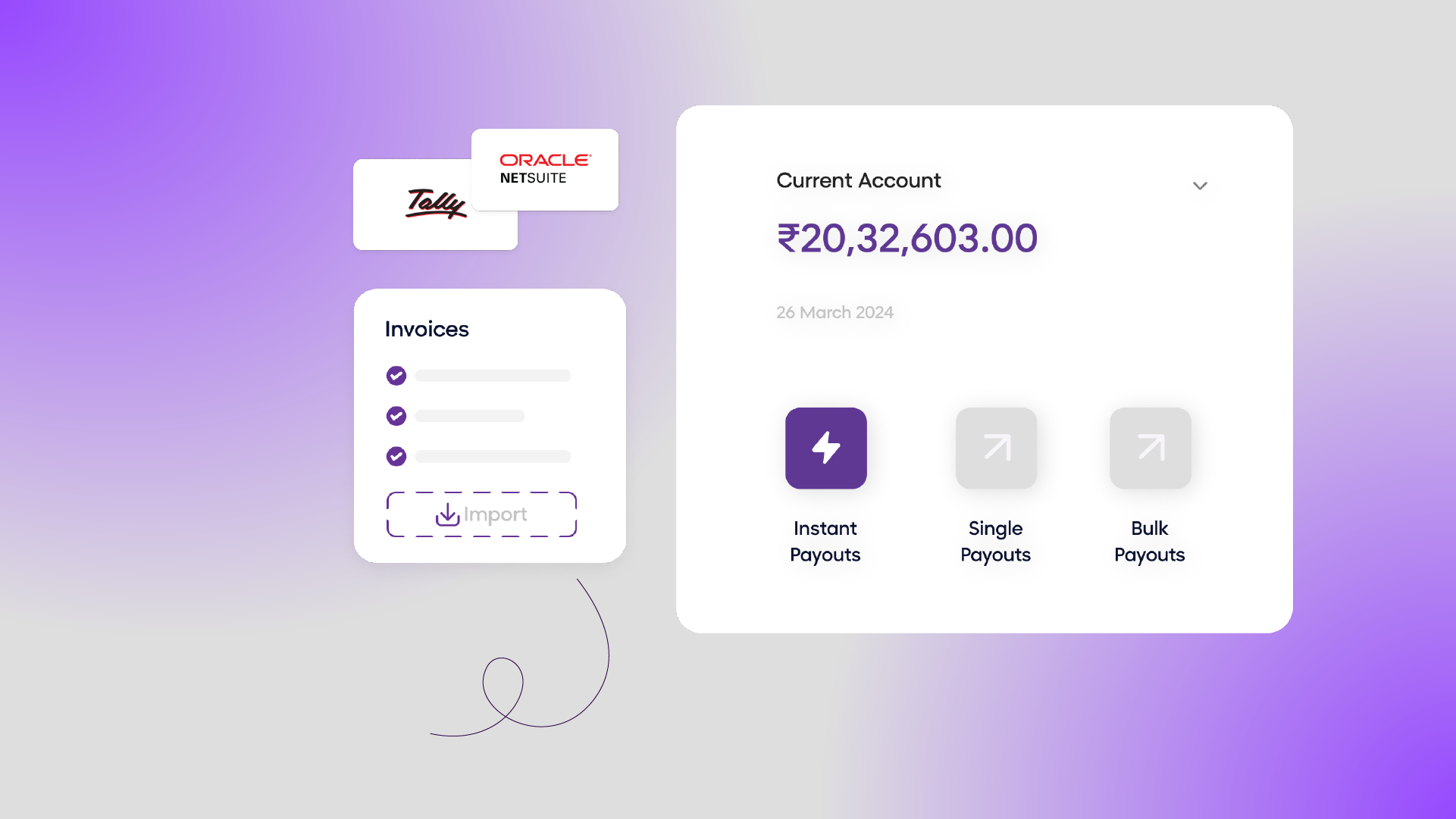Many Accounts Payable processes rely on manual practices that are time-consuming, error-prone, and at risk of fraud. With the arrival of connected finance, businesses can now simplify their Accounts Payable processes by using integrated digital tools, resulting in better accuracy and efficiency in financial operations.
Connected Finance refers to the integration of digital technologies and data analytics in financial services to create seamless, efficient, and personalized experiences for users. It combines tools like Artificial Intelligence, Blockchain, and Cloud Computing to automate processes, improve decision making and enhance customer interactions. With Connected Finance, you can access your financial information in real time, complete transactions faster, and gain insights to manage your money better.
Accounts Payable refers to the funds owed to suppliers for goods and services acquired on credit. Managing this process within your company can be difficult and time-consuming, and any mistakes in this area threaten the entire business.
You can effortlessly streamline your Accounts Payable process with connected banking services like OPEN.
Challenges that come with the Manual Accounts Payable process:
– Manual Accounts Payable processes involve time-consuming data entry and invoice processing, which can be prone to errors. Verifying and reconciling invoices manually adds to processing time, causing payment delays. This impacts efficiency and productivity as businesses struggle to manage high volumes of invoices.
– Due to human involvement in tasks like data entry and invoice processing, there’s a higher chance of errors and duplications in manual AP processes, leading to inaccuracies, overpayments, and delays.
– It can also limit visibility and control over cash flow, making it difficult to track expenses effectively and pay suppliers in a timely manner. This lack of oversight can cause cash flow problems and disrupt operations, impacting the organization’s financial stability and ability to meet obligations promptly.
– Manual AP processes can cause payment delays, straining vendor relationships and risking the business’s reputation. Automating AP tasks can prevent these issues, ensure timely payments, and improve overall efficiency.
– Another concern arises from the challenges related to compliance and security due to increased risks of errors and the possibility of failing to meet regulatory requirements. Switching to automated solutions is essential to reduce these risks and maintain the integrity of financial processes.
The Benefits of an Automating Accounts Payable Process:
An integrated platform for automating AP processes offers a complete solution to deal with common challenges in this area:
1. Automating Data Entry, Invoice Processing, and Approval Workflows:
By automating data entry, the platform eliminates manual errors and accelerates the processing of invoices. It streamlines approval workflows by routing invoices to the appropriate stakeholders based on predefined rules and thresholds, reducing delays and bottlenecks.
2. Providing Real-time Visibility into Financial Data and Cash Flow:
The platform offers real-time insights into invoice statuses, pending approvals, and payment schedules, enabling finance teams to monitor cash flow more effectively. Users can access dashboards and reports that provide a comprehensive view of financial data, empowering informed decision-making and proactive management of financial resources.
3. Enabling Electronic Payments and Streamlining Vendor Communications:
Integrating electronic payment systems facilitates the easy execution of payments, reducing the dependency on manual processing. The platform centralizes vendor communications, allowing for efficient collaboration and timely resolution of inquiries or issues related to invoices and payments.
4. Enhancing Accuracy, Compliance, and Security through Automated Controls:
Automated validation checks ensure everything’s accurate and follows the rules, reducing errors and fraud risk. The platform incorporates robust security features such as encryption, role-based access controls, and audit trails to safeguard sensitive financial data and ensure data integrity.
5. Integrating with Other Financial Systems for Seamless Data Exchange:
Integration capabilities enable effortless data exchange between the AP automation platform and other financial systems, such as ERP (Enterprise Resource Planning) and accounting software. This integration eliminates manual data entry and ensures data consistency across systems, enhancing operational efficiency and decision-making.
Connected Finance revolutionizes financial management by centralizing all accounts payable processes within a unified platform. This centralized system streamlines operations, minimizes duplication, and ensures consistency across the organization. Effortlessly integrating with various systems eliminates data silos, enabling smooth data exchange and improving efficiency and accuracy. Real-time consolidation of financial data provides valuable insights, empowering informed decision-making and strategic planning. Easily adaptable to organizational growth, Connected Finance promotes collaboration among teams and stakeholders, enhancing efficiency and alignment in budgeting and financial reporting tasks.
Want to get started with automating your accounts payable process? Check out our latest ebook here!
Step-by-Step Guide for Getting Started with Connected Finance for Automating Accounts Payable Process:
1. Evaluate Current AP Processes:
Assess existing accounts payable processes, including data entry, invoice processing, approval workflows, and payment methods. Identify pain points, inefficiencies, and areas for improvement, such as manual tasks, bottlenecks, and compliance issues.
2. Assess Readiness for Automation
Determine the organization’s readiness for AP automation by considering factors such as the volume of invoices, complexity of workflows, and existing technology infrastructure. Evaluate the availability of resources, including budget, IT support, and staff training.
3. Define Objectives and Requirements:
Clearly define AP automation’s objectives and desired outcomes, such as improving efficiency, reducing errors, enhancing visibility, and increasing compliance. Document specific requirements and criteria for selecting a Connected Finance solution that aligns with the organization’s needs.
4. Research Connected Finance Solutions:
Research and compare different Connected Finance solutions available in the market. Consider factors such as functionality, scalability, integration capabilities, vendor reputation, and pricing models. Request demos, case studies, and customer references to evaluate the suitability of each solution.
5. Select the Right Solution:
Select a Connected Finance solution that best meets the organization’s requirements and objectives. Ensure alignment with key stakeholders, including finance, IT, procurement, and operations teams. Negotiate terms and finalize contracts with the chosen vendor.
6. Plan for Implementation:
Develop a detailed implementation plan, including timelines, milestones, and resource allocation. Assign roles and responsibilities to internal team members and external stakeholders. Consider any customization, configuration, or integration requirements for the chosen solution.
7. Execute Change Management Strategies:
Communicate the benefits and objectives of AP automation to all stakeholders. Provide training and support to ensure a smooth transition and user adoption. Address concerns and resistance to change through open communication and proactive engagement.
8. Monitor and Evaluate Performance:
Monitor the implementation progress and performance of the Connected Finance solution. Gather feedback from users and stakeholders to identify areas for improvement and optimization. Continuously measure key metrics such as processing time, accuracy, cost savings, and user satisfaction.
Before we conclude, here’s an excellent resource from Deena Jacob on business finance automation that can answer the question you may have on getting started with your finance automation journey –
By following these steps and best practices, businesses can effectively evaluate their AP processes, select the right Connected Finance solution, and ensure successful implementation and adoption of AP automation.
Explore OPEN’s Connected Finance solutions for automating Account Payable process today! Our platform simplifies invoice processing, approval workflows, and payment management. It offers real-time visibility, scalability, and improved collaboration, all in one integrated solution.
Visit Open.money for more information!





